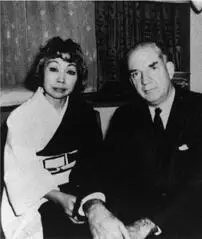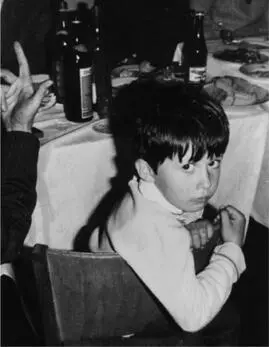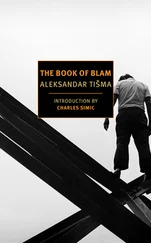29Major General Charles A. Willoughby, MacArthur’s Chief of Intelligence (1941–1951), confiscated all the Japanese Sorge files that survived the leveling of Tokyo and conducted an investigation of the Sorge case, which helped uncover many a Communist network back home in the United States of America. In his book Shanghai Conspiracy: The Sorge Spy Ring (1952) he aptly notes: “Though the work of Dr. Richard Sorge and his companions belongs to history, the methods of their work should serve as a clear warning for today and for the future. They concern not just the intelligence officer but every good citizen. Some of the implications are frightening. One begins to wonder whom one can trust, what innocent-appearing friend may suddenly be discovered as an enemy.”
30In August 1941, Hanakosan was summoned to the Thought Police headquarters and urged by a man named Nakamura to break off relations with Sorge (“They don’t know what loyalty means! They don’t know the value of the family!”). The typically Sorgean, sardonic reaction was to invite Nakamura to dinner — an invitation that was embarrassingly ignored.

31In the Sugamo prison, Sorge was befriended, somewhat surprisingly, by Captain Ohashi — the head of the guards. After Sorge had written his confession, Ohashi brought newspapers to Sugamo everyday, together with a supply of Sorge’s own tea. Sometimes, they’d drink tea together in Sorge’s cell (Sorge: “If I am sentenced to death, Captain Ohashi, I shall become a ghost and haunt you”). In October 1944, after the execution day had been set, Ohashi bought some fruit and sake and gave what he described as a “farewell party” for Sorge. Ohashi begged a farewell gift from Sorge — preferably Sorge’s black Italian shoes with leather soles and silk laces. After Sorge was led to the execution, the polished pair of shoes was found in his cell (toes facing the wall), with folded silk socks inside, and a note for Ohashi: “I will never forget your kindness during the most difficult time of my eventful life.”
32Before getting to Yoshikawa, Sorge went through the obligatory interrogation conducted by lower procurators, which chiefly meant rather routine torture: Sorge was compelled to remain in a kneeling position, in formal Japanese style, for hours, while three procurators struck him repeatedly, stamped their feet on his knees, or twisted his head and arms in a judo hold. On occasions, they’d burn hair or pierced particularly painful points (nipples, testicles, anus) on his body. Every once in a while Sorge would just close his eyes and try to ignore the immense pain. The momentary trance would be smashed by a full-fist blow from behind to his ear or the nape of his neck — the pain would be so intense that Sorge vomited uncontrollably. Naturally, he did not sign the confession under torture.
33While in high school, Sorge’s best friend was a Jewish boy named Franz, with whom he shared an interest in German history — particularly Barbarossa and Bismarck. The friendship was abruptly broken off after Franz tried to kiss Ika, over the book about Barbarossa’s incursion, full of pictures of heavily armored German knights on stout curtained horses.
34Sorge broke down in the-Buddhist chaplain’s room in Sugamo, after the signed statements by Klausen, Voukelitch, Ozaki, and Miyagi were shown to him. Yoshikawa made the following appeal: “What about your obligations as a human being? Your friends, who have risked their lives and families to work with you, for your cause, have confessed and may hope thereby to secure some mitigation, however slight, of their sentences. Are you going to abandon them to their fate? Are you going to betray them? Are you going to be remembered as a typical Western man, caring more about himself than anyone else? If I were in your place, I’d confess.” Sorge said: “Honourable Procurator, I have been defeated, for which I congratulate you,” after which he requested the pen (black-and-green Pelikan) and paper (blank sheet, hardcover notebook). He wrote an autobiographical confession, which amounted to some 50,000 words and began with the words: “For the first time in my life, I want to tell the truth: I have been a Communist since 1928.”
35Neither the German, Japanese, nor Soviet public was ever informed about Sorge’s trial and execution. Indeed, there was no official acknowledgment from any of the governments, apart from a brief cable from the German ambassador (recently promoted ex-Colonel Ott) in Tokyo, closing the case as far as Berlin was concerned: “The German journalist Richard Sorge who, as previously reported, has been condemned to death for espionage on behalf of the Soviet Union, was, according to a communication from the Foreign Ministry, hanged on November 7th.” (Let us note a well-known fact: November 7, 1944, was the twenty-seventh anniversary of the October Revolution.)
36In 1919, Sorge wrote a poem which began with the line: “Eternally a stranger, fleeing from himself” and read it in the Gerlach’s salon before the audience of leftist university professors, Christiane, and Kurt himself. Kurt Gerlach mercilessly mocked Sorge’s poetic instincts: “‘Fleeing from himself — bah! Where would you go? That’s bourgeois gibberish, Ika. Man is a product of social relations — formed in history by history — not a self, not an essence hoarded in the center of the metaphysical fluff. ‘Eternally a stranger’—bah!” Sorge burned the sheet with his poem and made no literary attempts (his confession notwithstanding) for the rest of his life.
37After the disastrous courting attempt, driven by the choking desire for Christiane (“Dear Ika! I have liked you, even your self-mocking and sardonic wit. But what you did last night is not what a decent woman can bear …”), Sorge attempted suicide. Lacking courage to end his life with his mind clear, he fueled his death wishes with cheap pear schnapps, while a razor lay, ominously, on the table before him. The courage, however, reached its zenith after the second glass, declining rapidly thereafter, until he passed out. He woke up sixteen hours later (reeking of vomit, emptied of schnapps) not knowing where he was or why he was there. After that unfortunate incident, he would see Christiane only from afar, embers of his former desire suffocating under the ashes of orgiastic rampages.
38During Sorge’s preliminary trial, Stalingrad was under siege. Sorge, who perceived that this was the battlefield where the war was to be decided, took great interest in news about the battle. He’d ask Yoshikawa in the court, whispering, about Stalingrad, while the judge would be talking to his clerk. Yoshikawa would reply in undertone, telling him about the general situation (“They’re keeping their positions,” or “It looks good”). The preliminary judge knew what was going on, but did nothing to stop them. When Stalingrad was saved, Ohashi watched Sorge, through the peephole of his cell, dancing, clapping hands, and kissing the walls with joy.
39Moments before the execution, the chief chaplain of the Sugamo prison (accompanied by Yoshikawa and Ohashi) offered Sorge tea and cake and said: “Life and death are one and the same thing to one who has attained personal beatitude. Impersonal beatitude can be attained by entrusting everything to the mercy of Buddha.” Sorge said: “I thank you, but: no!”

40Sorge was led into a vaporous, windowless, bare room, with a gallows standing in the center. He was led across the room and placed beneath the gallows, while a noose was affixed around his neck. There was no staircase to climb, no platform to stand on. The trap was in the floor, immediately beneath his feet.
Читать дальше














